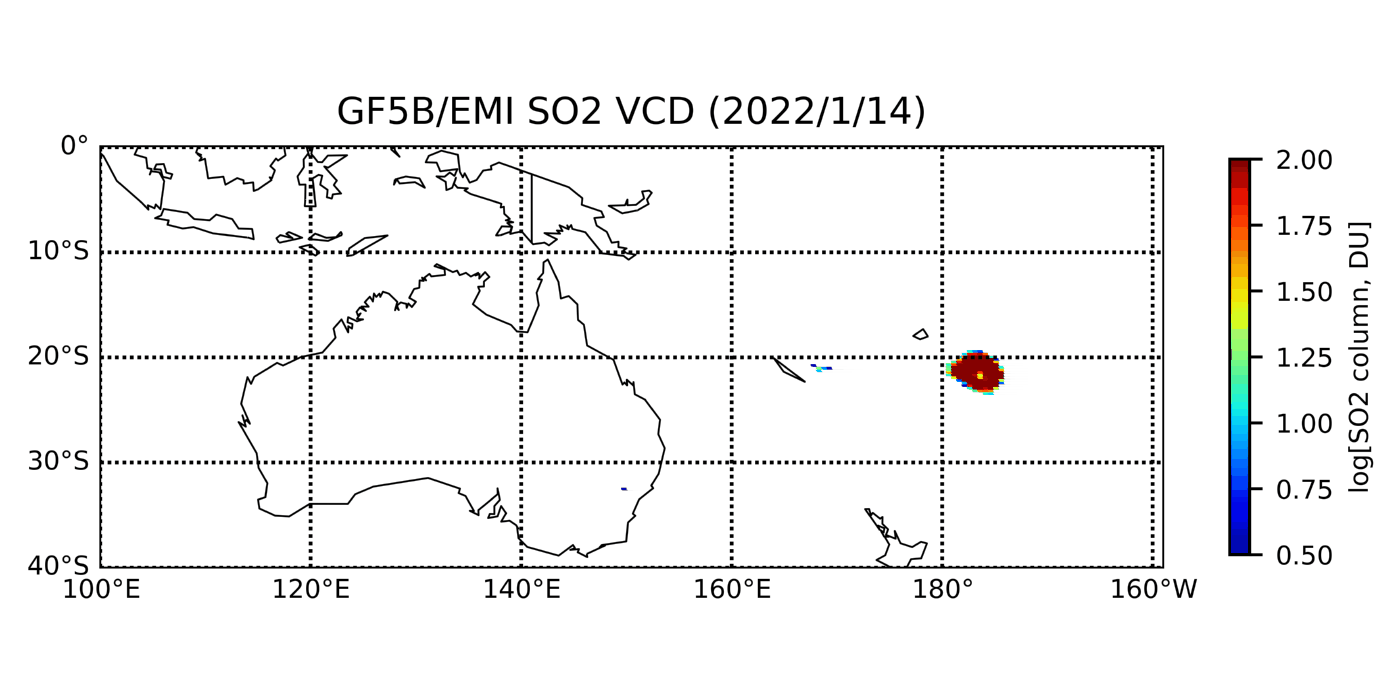
A huge plume of ash, steam and gas rising up high from the underwater near Tonga has drawn attention around the world on January 14, just two weeks after the beginning of 2022.
The communication to the outer world has been cut off immediately after the volcano eruption, and the devastating explosion was still captured by satellites orbiting the earth. The explosion may not be the one impacting the planet the most, "but to witness it with the modern array of instruments we have is truly unprecedented", said Lori Dengler, an emeritus professor of geophysics at Humboldt State University in California.
The environmental monitoring instrument (EMI) developed by the Hefei Institutes of Physical Science (HFIPS) of the Chinese Academy of Sciences on the Hyperspectral Observation Satellite is among the modern observation instrument arrays.
The data showed a high concentration of SO2 above the eruption vent after the first explosion. Just one day later, the west-toward movement of SO2 alongside the upper airflow was capture by HFIPS's EMI and the gas arrived at the sky above Australia on January 17. Then SO2 from the eruption did not stop, reaching the skies of northwestern Australia on January 19.
SO2 is one kind of the gas produced when volcanoes erupt. It is a big factor to evaluate the impact of eruption on global climate. EMI is the only Chinese orbital observation instrument on the hyperspectral observation satellite.
Weeks have passed. Scientists from across the world are still trying to better understand the massive explosion. And EMI remains orbiting, and observations of the produced gas continue.

Data captured by EMI showed a high concentration of SO2 above the eruption vent after the first explosion. (Image by HFIPS)

86-10-68597521 (day)
86-10-68597289 (night)

52 Sanlihe Rd., Xicheng District,
Beijing, China (100864)

